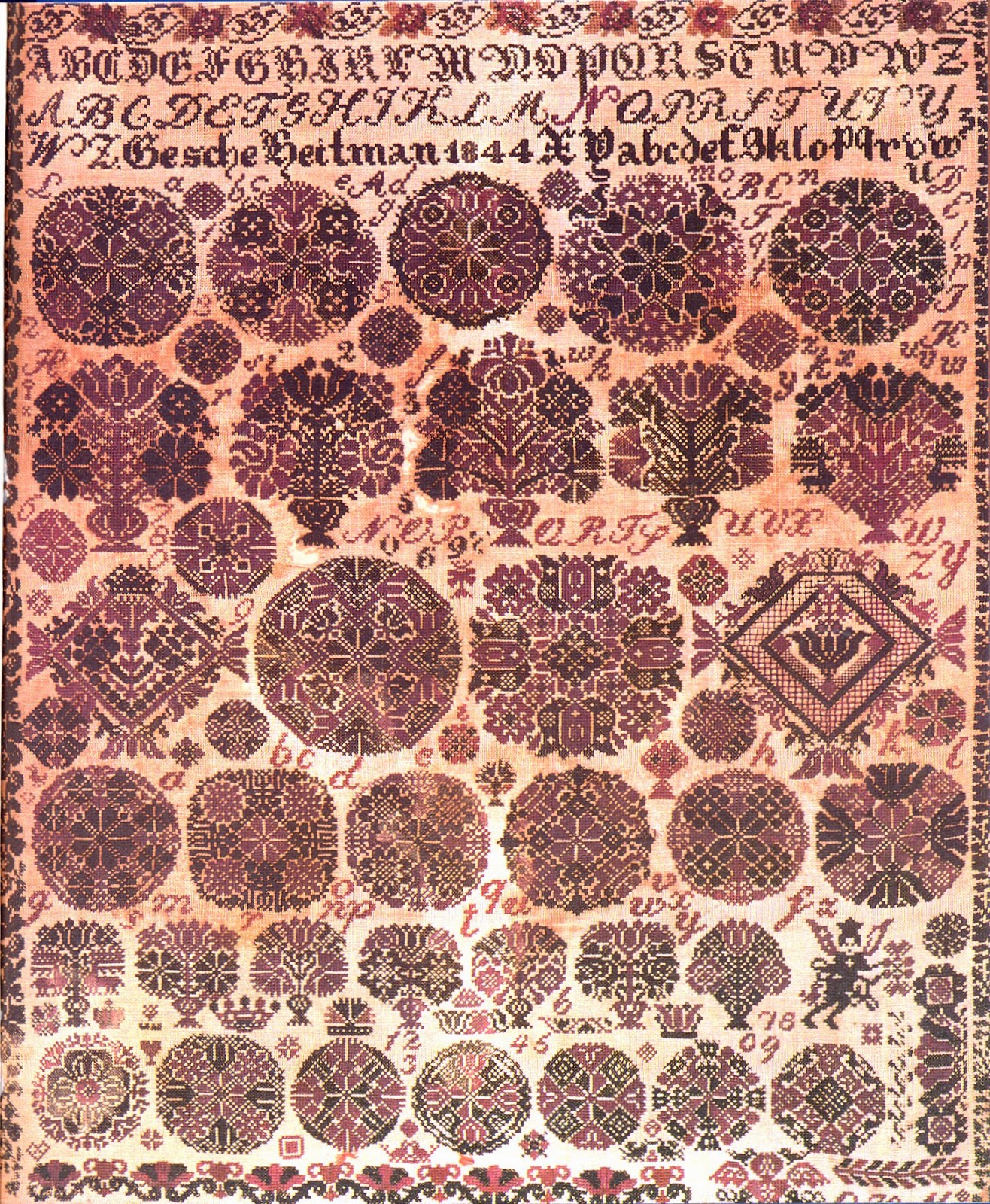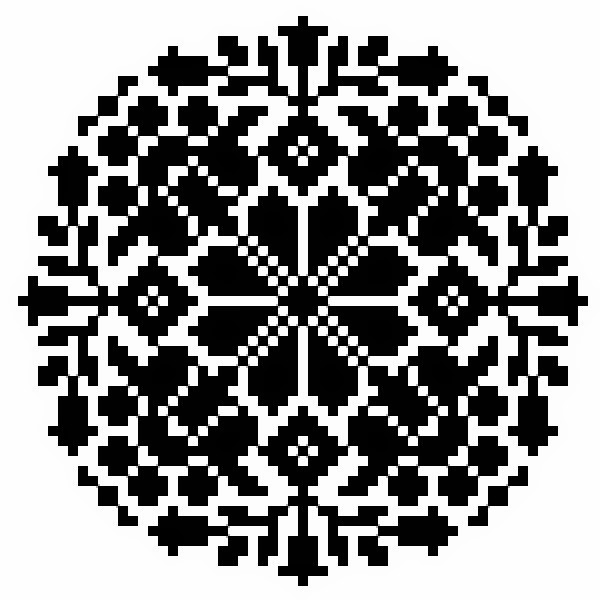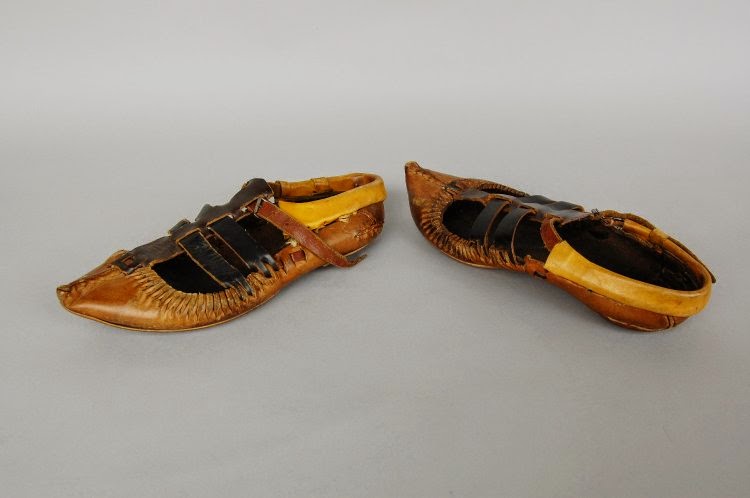Hello all, today I would like to return to Macedonia. Specifically, I will cover the costume and embroidery of the village of Galičnik in western Macedonia. This is one of the best known villages of the ethnic group called the Miyak. These are a pastoral people who have kept their traditions better than most in Macedonia. They are found in several villages on the western edge of Macedonia, and have also migrated to the southeast to found other communities; Ehloetc, Smilevo, Oreshe, Papradishte and Krushevo.
http://en.wikipedia.org/wiki/Gali%C4%8Dnik
The Miyaks speak an archaic dialect of Macedonian, but their origin is unclear. They may be a blend of Slavs with a pastoral Aromanian group. In any case, they have one of the strongest and most distinctive costume traditions in Macedonia. This may be seen every year around July 12 when the town of Galičnik puts on a traditional wedding publicly.
http://en.wikipedia.org/wiki/Gali%C4%8Dnik_Wedding_Festival
Some of the images which i will use here were taken from the British Museum research collection website, an exceedingly useful tool.
http://www.britishmuseum.org/research/collection_online
Macedonian costume, like
Balkan costume in general, is characterized by multiple layers. The
chemise, koshula, was originally the base garment, but it is very
common in Macedonia for there to be another garment worn underneath it,
possibly because the sleeves tend to be rather wide. This undergarment
is known here as mintan. This is a plain jacket like garment which is ornamented only on the lower sleeves, collar, and center front, which are the only parts which show when fully clothed.
If you look at some of the images above, you can see that the gold cordwork and ornamental buttons are visible as the centermost layer in the woman's costume.
Over this is worn the koshula, the chemise, which is of linen and is of the standard balkan cut. The sleeves and the lower portion show when fully dressed, and sometimes the embroidery of the front opening forms part of the layered effect on the center front.
The lower part of the chemise is embroidered in white on white, and there is an interlacing openwork stitch done between the panels.
The embroidery used on the sleeves is unique for Macedonia, although all of the techniques are widely known. There are strips of overcast or needleweave hemstitching which run the length of the outer sleeve, and others which run parallel to the sleeve end. These are outlined with several rows of herringbone stitch which all run in the same direction. some panels are filled with slanted or slav stitch, and the upper edge often has ornaments in other types of stitching. There are tassels on the sleeve end. The main color is red, ranging from brick to almost burgundy, with small admixtures of black, white, green, and yellow. The sleeves are often made to be removable, so that different sleeves may be worn with the same chemise.
Over the chemise is worn a vest, elek, which looks very much like the mintan, but has no sleeves, and the ornamented front is made not to close, but to gap enough to show the center of the mintan and sometimes the koshula.

Over this is worn another vest, or perhaps jacket is a better term, the klashenik. This is made of heavy wool, reaches to about the knee and is ornamented with braid around the front opening, and around the hem. It does have sleeves, but they are vestigial, and far too small to use. The arm is put through a hole beneath the sleeves. This style is very old, and is found in many places, from Poland to Udmurtia, from Greece to Turkmenistan.
The front of the klashenik is cut in such a way that when it is put on it leaves a gap in front through which one can see the mintan, the koshula, and the elek. The end effect is a triple row of buttons, braid and cord ornamentation. Sometimes the gold cord is substituted with yellow silk cord.
Over this they often wear two sashes, each with fringe on the sides, a black one, and then a red one over that.
The apron is essential, and they wear various kinds. A less dressy version is a simple panel with wide stripes, often black and red.

A dressier version of the apron is woven with narrow stripes, has fringes on both ends, and is worn doubled over. This one is from Galičnik.
This one is from Mala Reka.
Sometimes this kind of apron has added cord ornamentation, especially in the Miyak enclaves to the southeast, like these two from Smilevo.
A third type of apron is worn for some ceremonial occasions. This is a simple panel of Turkish woven silk, and is called Stambolska Futa.
Over the apron a silk shawl is worn folded around the waist. This always has fringe, and may have tambour embroidery on it. Over the shawl a belt with a large metal buckle, gulmish pafta, is worn, and a chain with coins hanging from it is worn below that. These provide percussion when walking or dancing.
On the head, for more formal occasions, a cap with a long narrow extension in back may be worn, the glaina sokay. This is ornamented with gold or yellow silk cord. Here are two examples from Krushevo and Smilevo.
In western Macedonia, the sokay had fringe, trim and beadwork. The bride's sokay had an extended piece which attatched to the end with a hook. Here is an example from Mala Reka.
Over the sokay, or just on the head, a kerchief, darpni, is worn. This is a square piece of linen with fringes and embroidery on the edge. Originally it had ornaments embroidered in two sided stitch inside the edge.
Over this is worn a piece of
jewelry called igla, which consists of silver filigree pieces joined by chains.
This is worn on the crown of the head. This may have pieces which hang over the forehead.
Hand knitted woolen stockings called chorapi are worn on the feet. These come over the calf, and the legs should not be visible. There are a great variety of patterns used. Sometimes they have a woven in ornament, and sometimes just a texture, with plain knitted areas covered with embroidery. This pair is from Galičnik.
This pair is from Smilevo.
On the feet, standard Macedonian moccasins, called opanci may be worn.
In the past, a fancier version was sometimes worn, as in this drawing.
Today, you will often see panty hose and modern shoes worn with this outfit. I personally do not care for this, but they seem to feel that it is more stylish, or perhaps just easier.
This concludes my review of this costume. I will add some more images. Here is the costume as drawn by Vera Klichkova, with all the pieces laid out.
Here is a costume from the Demir Hisar municipality, Smilevo, in stages of being put on. This is in the Ron Wixman/Stephen Glaser Collection.
I will close with just a few more images of this costume.
 Here is a video of the annual Galichnik wedding held every year, showing the dancing.
https://www.youtube.com/watch?v=q758L0O-ZrQ
Here is a longer video put together by the Macedonian News Agency Vesti, which covers the various traditional ceremonies of the wedding. Good closeups. One unfortunate detail is the addition of a western style wedding veil over the traditional costume. Ghastly!!
https://www.youtube.com/watch?v=YBW6UR0IhAU
email; rkozakand@aol.com
Source Material:
The British Museum research collection website, an exceedingly useful tool.
http://www.britishmuseum.org/research/collection_online
Kamelia Gruncharova, 'Tradicionno Narodno Obleklo po Porechieto na Reka Struma', Sofia, 2006
Angelina Krsteva, 'Macedonian Folk Embroidery', Skopje, 1975
Anica Petrusheva, 'Narodna Nosnja u Skopskoj Crnoj Gori', Zagreb, 1988
Georgi Zdravev, 'Macedonian Folk Costumes I', Skopje, 1996
Georgi Zdravev, 'Macedonian Folk Costumes - Weavings, Embroideries, Knitting, Adornments and Jewelry', Skopje, 2005
Bobbie Sumberg editor, 'Young Brides, Old Treasures', Seattle, 2012
Nikola Pantelic, 'Traditional Arts and Crafts in Yugoslavia', Belgrade, 1984
Vera Klichkova, 'The National Dresses [sic] of Macedonia', Skopje, 1963
Elizabeth Waland Barber et al, 'Resplendent Dress from Southeast Europe', Los Angeles, 2013
Dragi Mitrevski et al, 'From the Traditions of the Past', Skopje, 2002
Here is a video of the annual Galichnik wedding held every year, showing the dancing.
https://www.youtube.com/watch?v=q758L0O-ZrQ
Here is a longer video put together by the Macedonian News Agency Vesti, which covers the various traditional ceremonies of the wedding. Good closeups. One unfortunate detail is the addition of a western style wedding veil over the traditional costume. Ghastly!!
https://www.youtube.com/watch?v=YBW6UR0IhAU
email; rkozakand@aol.com
Source Material:
The British Museum research collection website, an exceedingly useful tool.
http://www.britishmuseum.org/research/collection_online
Kamelia Gruncharova, 'Tradicionno Narodno Obleklo po Porechieto na Reka Struma', Sofia, 2006
Angelina Krsteva, 'Macedonian Folk Embroidery', Skopje, 1975
Anica Petrusheva, 'Narodna Nosnja u Skopskoj Crnoj Gori', Zagreb, 1988
Georgi Zdravev, 'Macedonian Folk Costumes I', Skopje, 1996
Georgi Zdravev, 'Macedonian Folk Costumes - Weavings, Embroideries, Knitting, Adornments and Jewelry', Skopje, 2005
Bobbie Sumberg editor, 'Young Brides, Old Treasures', Seattle, 2012
Nikola Pantelic, 'Traditional Arts and Crafts in Yugoslavia', Belgrade, 1984
Vera Klichkova, 'The National Dresses [sic] of Macedonia', Skopje, 1963
Elizabeth Waland Barber et al, 'Resplendent Dress from Southeast Europe', Los Angeles, 2013
Dragi Mitrevski et al, 'From the Traditions of the Past', Skopje, 2002




















































































































